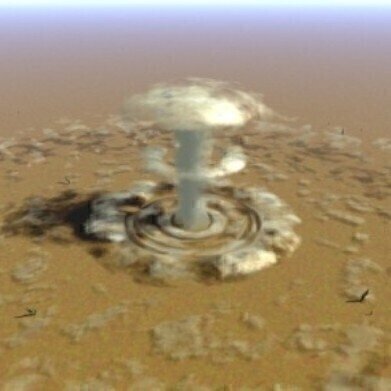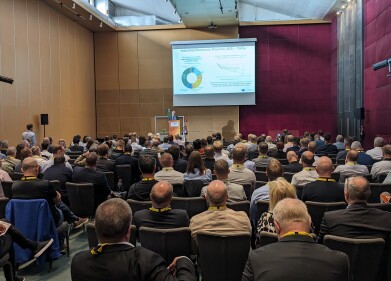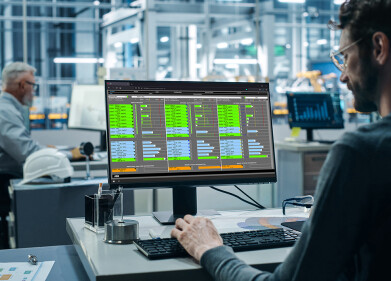-
 its possible the radioactive gases found were caused by North Korea's test
its possible the radioactive gases found were caused by North Korea's test
Air monitoring
Gas detection reveals radioactive gases in Japan
Apr 26 2013
The first radioactive noble gases - possibly - from North Korea's nuclear test in February have been detected by a nuclear monitoring station in Japan. The Japanese station - located around 1,000km from the nuclear test site in North Korea - is operated by the Comprehensive Nuclear Test Ban Treaty Organization (CTBTO). It announced the detection of radioactive isotopes and the noble gas xenon in two forms - xenon-131m and xenon-133 - calling the detection "rather unusual".
The CTBTO was unable to tell whether the underground detonation had used plutonium or highly enriched uranium. The length of time that passed between the detonation and the detection of the radioactive gases made it difficult to know which of the two fissile materials were used in the device.
The radioactive gasses are one of the things that the Japanese station looks out for as part of the nuclear monitoring, as the gases can only be released by nuclear testing. The gases either come from a nuclear testing site or seep through underground rocks to the surface once a nuclear test has been performed.
North Korea admitted to performing a nuclear test - in defiance of the international nuclear testing bans - after an earthquake was detected by another agency. The government said that it had set off a nuclear device that had a greater force than the devices used in previous tests in 2006 and 2009.
KCNA, North Korea's official news agency, said: "It was confirmed that the nuclear test that was carried out at a high level in a safe and perfect manner using a miniaturised and lighter nuclear device with greater explosive force than previously did not pose any negative impact on the surrounding ecological environment."
It has not been confirmed beyond doubt that the gases found are directly linked to the testing performed by North Korea. CTBTO has admitted that the amount of xenon detected is along the lines of what it would expect after more than 50 days since a test has been performed. This matches with the timeframe of the North Korean nuclear test. However, the organisation is looking into other possible reasons for the noble gases before confirming that they are caused by the testing.
MIka Nikkinen, radionuclide expert at the CTBTO, said: "We are in the process of eliminating other possible sources that could explain the observations; the radionuclides could have come from a nuclear reactor or other nuclear activity under specific conditions, but so far we do not have information on such a release."
Digital Edition
AET 28.4 Oct/Nov 2024
November 2024
Gas Detection - Go from lagging to leading: why investment in gas detection makes sense Air Monitoring - Swirl and vortex meters will aid green hydrogen production - Beyond the Stack: Emi...
View all digital editions
Events
Jan 12 2025 Abu Dhabi, UAE
Jan 14 2025 Abu Dhabi, UAE
Jan 20 2025 San Diego, CA, USA
Carrefour des Gestions Locales de L'eau
Jan 22 2025 Rennes, France
Safety, Health & Wellbeing LIVE
Jan 22 2025 Manchester, UK


















